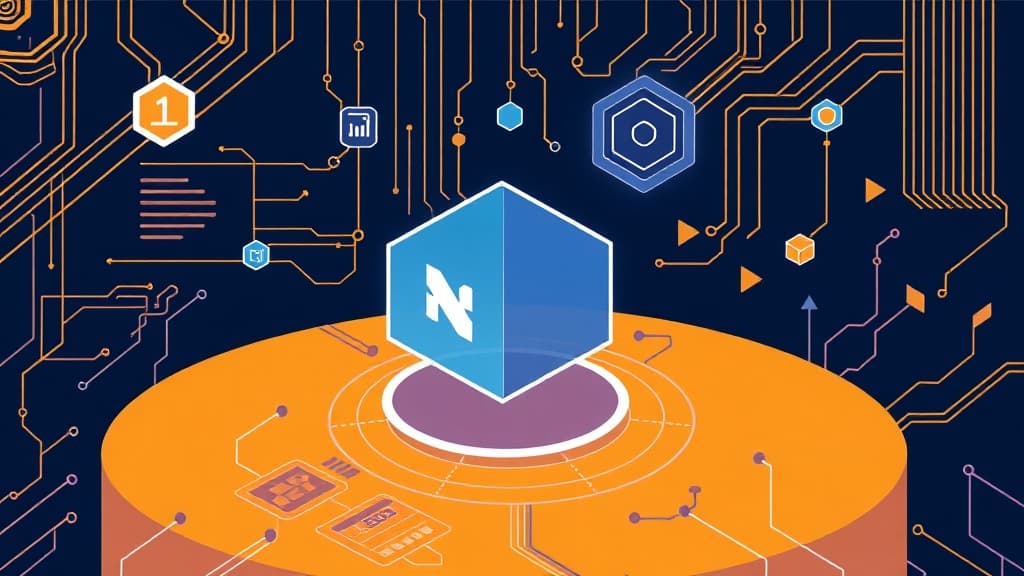Next.js 15.4: Edge Functions for Enhanced Performance

Next.js 15.4: Edge Functions for Enhanced Performance
Hey there, fellow developers! If you're like me, you're always on the lookout for ways to supercharge your web applications. Well, I've got some exciting news! With the release of Next.js 15.4, we now have Edge Functions at our disposal, opening up a world of possibilities for optimizing performance and scalability. Let’s dive in and explore what this means for us and our projects.
What Are Edge Functions?
You might be wondering, what exactly are Edge Functions? Simply put, they allow you to run your code at the edge of the network, which means it executes closer to your users. This drastically reduces latency and improves load times. It's a game-changer for dynamic content generation, especially for apps that rely on real-time data or user-specific content.
In Next.js 15.4, these serverless functions can be deployed directly on CDNs (Content Delivery Networks). By doing this, we minimize the server load and enhance response times, making our applications feel snappier to users everywhere.
Performance Enhancements You Can’t Ignore
One of the most significant upgrades with Next.js 15.4 is how it leverages Edge Functions to handle dynamic content more efficiently. Have you ever experienced lag while waiting for data to load on a web app? Yeah, me too. With Edge Functions, that’s becoming a problem of the past.
The built-in caching strategies are pretty cool, allowing us to retrieve data faster and cutting down on those repeated requests to the origin server. For instance, when a user visits your site, their request for personalized content can be fulfilled almost instantly, thanks to local caching.
Here's a quick snippet showing how easy it is to set up an Edge Function:
// pages/api/hello.js
import { NextResponse } from 'next/edge';
export const config = {
runtime: 'edge', // Specify that this function should run at the edge
};
export default async function handler(req) {
const data = await fetch('https://api.example.com/data');
const jsonData = await data.json();
return NextResponse.json(jsonData, { status: 200 });
}
With just a few lines of code, you can have a serverless function running at the edge. Pretty awesome, right?
API Improvements for a Smoother Experience
Next.js 15.4 didn’t just stop at performance; it also refined the API for creating Edge Functions, making our lives a whole lot easier. The new next/edge module allows us to define our functions in a more intuitive way. I’ve found that the simplicity of this API boosts my productivity, letting me focus more on building features rather than wrestling with setup complexities.
The Next.js team has worked hard on this, and their focus on improving the developer experience is evident. They've also rolled out extensive documentation to help us get up and running with Edge Functions quickly.
Real-Time Data Handling: A Game-Changer
Real-time applications have always posed a challenge in web development. However, with the new capabilities in Next.js 15.4, handling real-time data is simpler than ever. Think about chat applications, live dashboards, or collaborative tools. These apps require seamless data updates, and Edge Functions are the key to making that happen efficiently.
For example, if you're developing a collaborative document editor, you can leverage Edge Functions to push updates to users almost instantaneously. This not only enhances user experience but also makes your application feel alive and responsive.
Best Practices for Using Edge Functions
While Edge Functions are powerful, there are still some best practices to keep in mind:
- Keep Functions Lightweight: Remember, these functions run in a constrained environment. Try to minimize your code size and avoid heavy dependencies.
- Optimize Data Fetching: Use efficient data-fetching strategies to cut down on API requests. Caching is your friend here!
- Utilize Environment Variables: For security, manage sensitive data like API keys using environment variables.
By following these practices, you can maximize the benefits of Edge Functions and ensure your applications are efficient and secure.
Real-World Applications
Now, let's talk about some real-world applications. Companies across various sectors are adopting Edge Functions with Next.js 15.4 to enhance their platforms.
E-commerce Platforms
E-commerce sites are leveraging Edge Functions for features like personalized product recommendations and dynamic pricing. By analyzing user behavior in real-time, platforms can serve tailored content based on location and preferences, boosting conversion rates.
Content Delivery
News websites and blogs are also making the switch. They use Edge Functions to serve personalized articles quickly, improving engagement and reducing bounce rates. Imagine a user landing on your site and immediately seeing content relevant to their interests—that’s the power of Edge!
Gaming
Online gaming platforms are adopting Edge Functions to minimize latency in multiplayer environments. By processing actions closer to the user, they can create a smoother gaming experience without frustrating lag times.
Live Applications
Collaborative tools are using Edge Functions to manage real-time data updates seamlessly. Whether it’s a team working on a document or a live-streaming platform, Edge Functions ensure that everyone stays in sync.
Conclusion: The Future with Next.js 15.4
Next.js 15.4, with its Edge Functions, truly represents a leap forward in web application performance and scalability. As developers, we’re now armed with tools that allow us to create more dynamic and responsive applications than ever before.
So, whether you're building an e-commerce site, a real-time application, or anything in between, consider integrating Edge Functions into your workflow. They’re not just a trend; they’re shaping the future of web development.
Are you excited to try out these features in your projects? I know I am! Let’s continue pushing the boundaries of what we can achieve with Next.js. Happy coding!
